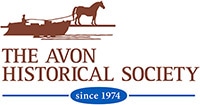Use and Sources of Ohio Hopewell Fossil Shark Teeth, presented by Katherine Sterner, Ph.D., RPA; Assistant Professor, Department of Sociology, Anthropology, & Criminal Justice; Director, Baltimore Community Archaeology Lab. Learn more about Katherine here.
Fossil shark teeth recovered from Ohio Hopewell sites represent a quintessential example of an exotic good representative of the Hopewell Interaction Sphere. As with most artifacts, the primary questions asked of fossil shark teeth in archaeological contexts are (1) what were they used for and (2) where did they come from? Answers to date are that these objects were primarily decorative or catch-all ceremonial in function, with more recent consideration of additional utilitarian functions. Several sources have been considered for fossil shark teeth recovered from Ohio archaeological sites: the lower Mississippi valley, Florida, the Gulf Cost, the Carolinas, and the Chesapeake Bay region. Sourcing evidence typically relies on factors such as proximity to the proposed sources, the presence/absence of other participants in the Hopewell Interaction Sphere, the presence of Ohio-sourced materials in the proposed shark tooth source location, the presence of waterways for transportation, and proximity to fossil shark teeth. This study applies use-wear analysis to samples of fossil shark teeth from Florida, Ohio, and the Chesapeake Bay, to determine if teeth were used in a similar manner between regions, and if such overlap may indicate the primary source of Ohio fossil shark teeth.
This 2024 VIRTUAL HISTORY SERIES is sponsored by Avon Historical Society, Avon Free Public Library and Avon Senior Center, in partnership with the Avon Land Trust, Farmington River Watershed Association, and the Institute of American Indian Studies in Washington, CT.
Please register and a Zoom link will be sent out before the event.


